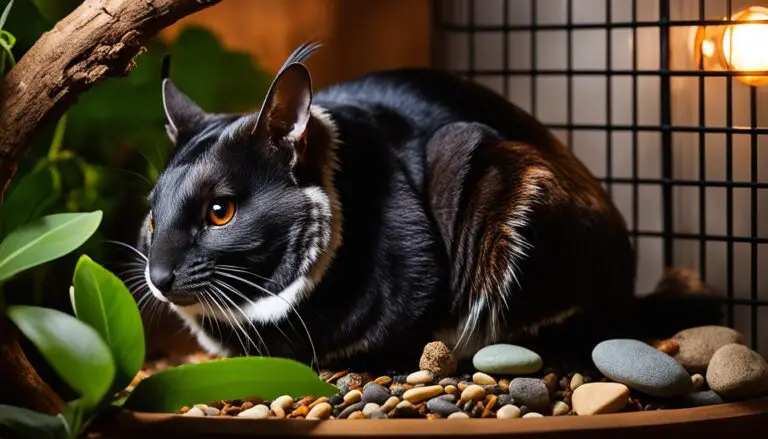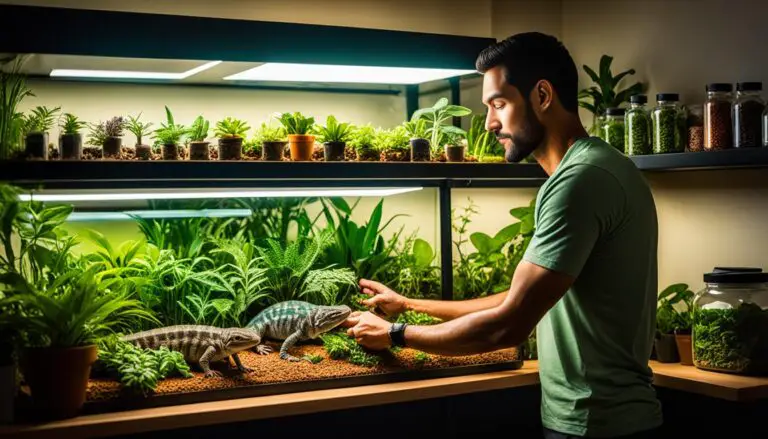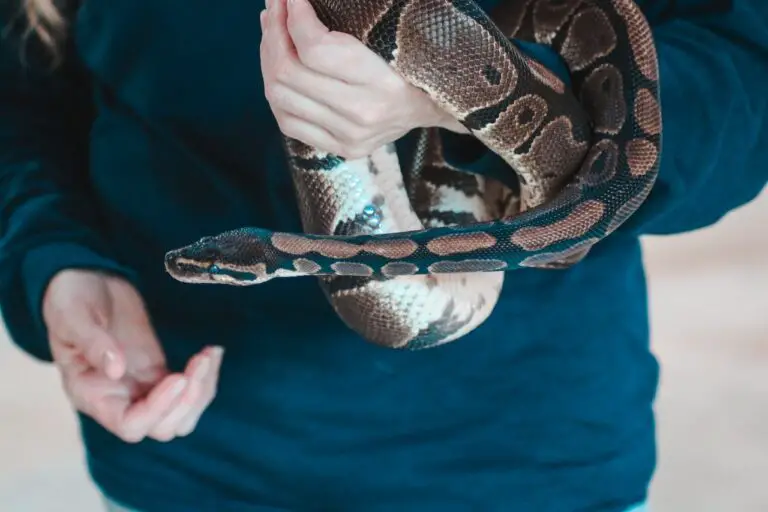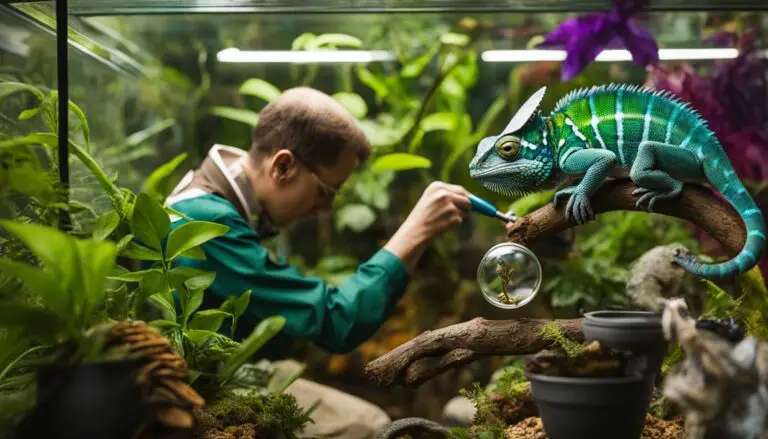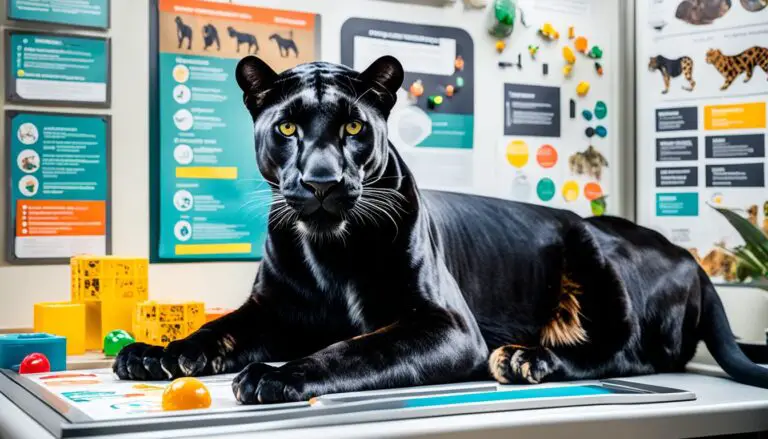How to Handle Your Exotic Pet During Extreme Weather [Vital Tips]
Welcome to our guide on handling exotic pets during extreme weather conditions.
As a responsible pet owner, it’s crucial to understand the impact of weather on your exotic pet’s well-being and provide the necessary care and precautions to ensure their safety and comfort.
In this article, we will explore the various aspects of handling exotic pets during extreme weather and provide you with valuable tips and guidelines to keep your furry, scaly, or feathery friends healthy and happy.
Key Takeaways:
- Proper care and precautions are crucial when handling exotic pets during extreme weather conditions to ensure their safety and well-being.
- Understanding your exotic pet’s species and their specific needs is essential for providing an appropriate living environment.
- Creating a safe and comfortable environment includes factors such as enclosure setup, lighting, substrate choices, and ventilation.
- Maintaining optimal temperatures and humidity levels is vital for exotic pets, and the use of thermostats, heat sources, hygrometers, misting systems, and appropriate substrates can help achieve this.
- Protection from natural disasters requires planning ahead, preparing emergency kits, and having evacuation strategies in place.
- It’s crucial to monitor your exotic pet for signs of discomfort or distress, seek veterinary care when needed, and be prepared for emergencies.
- When traveling with exotic pets during extreme weather, consider the comfort and security of their travel enclosure and check weather forecasts along the route.
Importance of Proper Care during Extreme Weather
Exotic pets, such as reptiles, amphibians, birds, and small mammals, have unique needs that differ from those of traditional pets.
These animals often come from specific climates or habitats, making them more susceptible to temperature and humidity variations.
Extreme weather conditions, such as heatwaves, cold snaps, or storms, can pose significant risks to their health.
Therefore, it is essential to provide proper care and create a suitable environment for your exotic pet to thrive, regardless of the external weather conditions.
Understanding the Needs of Exotic Pets
Before delving into specific weather-related concerns, it’s crucial to have a good understanding of your exotic pet’s species and their natural habitat.
Different exotic pets have different environmental requirements, including temperature ranges, humidity levels, and lighting conditions.
Research your pet’s species to ensure you can meet their specific needs and make appropriate adjustments as weather conditions change.
Creating a Safe and Comfortable Environment
The first step in handling extreme weather is to create a safe and comfortable living environment for your exotic pet.
Consider the following factors when setting up their enclosure:
- Enclosure Setup: Provide an appropriately sized enclosure that mimics their natural habitat, including suitable substrates, hiding spots, and climbing structures.
- Lighting: Use full-spectrum lighting to replicate natural sunlight, as some exotic pets, like reptiles, require specific UVB light for proper metabolic function and vitamin synthesis.
- Substrate Choices: Select substrates that are suitable for your pet’s species, taking into account their comfort and the ability to retain or release heat appropriately.
Temperature Control for Exotic Pets
Maintaining optimal temperatures is crucial for the well-being of your exotic pet.
Extreme temperatures can lead to heatstroke, hypothermia, or other health complications.
Here’s what you need to consider:
- Research Optimal Temperature Range: Understand the ideal temperature range for your exotic pet’s species and maintain it consistently within their enclosure.
- Thermostats and Heat Sources: Use thermostats to monitor and regulate the temperature within the enclosure. Depending on your pet’s needs, utilize heating pads, ceramic heat emitters, heat lamps, or radiant heat panels.
Humidity Management
Many exotic pets, particularly amphibians and reptiles, require specific humidity levels to thrive.
In areas with dry or arid weather, it’s crucial to maintain adequate humidity within their enclosures.
Consider the following tips:
- Hygrometers: Use hygrometers to monitor humidity levels accurately and make adjustments when necessary. Different species have varying humidity requirements.
- Misting and Water Features: Employ misting systems, humidifiers, or water features to increase humidity levels within the enclosure. Ensure that the enclosure does not become excessively damp, which can lead to mold or respiratory issues.
Providing Adequate Ventilation
While maintaining appropriate temperatures and humidity levels is essential, proper airflow and ventilation are equally crucial for your exotic pet’s health.
Here’s what you should know:
- Airflow and Enclosure Design: Ensure that the enclosure allows for adequate airflow to prevent heat buildup or stagnant air. Opt for enclosures with ventilation systems or use fans to promote air circulation.
- Avoid Drafts: While airflow is essential, it’s equally crucial to avoid direct drafts that can cause temperature fluctuations and stress your pet.
Protecting Exotic Pets from Natural Disasters
Extreme weather events, such as hurricanes, floods, or wildfires, can pose significant risks to both you and your exotic pet.
Prepare in advance to ensure their safety:
- Evacuation Plans: Have a detailed plan in place in case you need to evacuate your home. Know pet-friendly shelters or accommodations that accept exotic pets in your area.
- Secure Outdoor Enclosures: If your exotic pet has an outdoor enclosure, ensure it is secure and can withstand severe weather conditions. Consider bringing them indoors during extreme events.
Preparing an Emergency Kit
Put together an emergency kit specifically tailored for your exotic pet.
This kit should include essential supplies and information that you may need during extreme weather situations:
- Food and Water: Stock up on an ample supply of your pet’s food and fresh water. Store it in a safe and easily accessible location.
- Medications and Medical Records: Keep a copy of your pet’s medical records, including vaccination records and any specific medication they may require.
- Contact Information: Maintain a list of emergency contacts, including your veterinarian and local animal control, in case you need immediate assistance.
Identifying Signs of Discomfort or Distress
Exotic pets may exhibit signs of discomfort or distress during extreme weather conditions.
It’s essential to recognize these signs and take appropriate action:
- Observation and Monitoring: Regularly observe your exotic pet for any behavioral changes, loss of appetite, excessive panting, or lethargy. These could be indications of heat stress or other weather-related issues.
- Cooling Methods: If your pet shows signs of overheating, provide immediate relief by offering a cooler area in their enclosure, misting them with water (if appropriate for their species), or gently wiping them with a damp cloth.
Seeking Veterinary Care
Seeking veterinary care for your exotic pet during extreme weather is crucial to ensure their health and well-being.
Exotic pets have unique physiological and behavioral traits that may make them more susceptible to weather-related issues.
Here’s what you need to know about seeking veterinary care:
- Choose an Exotic Pet Veterinarian: It’s essential to find a veterinarian who specializes in exotic pet care. Not all veterinarians have experience or knowledge of exotic species, so look for professionals who have expertise in treating reptiles, amphibians, birds, or small mammals.
- Regular Check-ups: Schedule regular veterinary check-ups for your exotic pet, even during times of mild weather. Regular examinations allow the veterinarian to monitor their overall health and address any underlying conditions that may be exacerbated by extreme weather.
- Weather-Related Concerns: If you notice any unusual behavior or physical symptoms in your exotic pet during extreme weather, contact your veterinarian promptly. Symptoms such as lethargy, loss of appetite, respiratory difficulties, or changes in skin coloration may indicate weather-related issues that require immediate attention.
- Heatstroke and Hypothermia: Extreme heat or cold can lead to life-threatening conditions like heatstroke or hypothermia in exotic pets. If you suspect your pet is experiencing heatstroke (e.g., excessive panting, weakness, seizures) or hypothermia (e.g., shivering, pale gums, lethargy), seek veterinary care immediately.
- Medical Advice and Treatment: Your exotic pet veterinarian can provide specific advice and treatment options tailored to your pet’s needs. They may recommend adjustments to the enclosure’s temperature or humidity, prescribe medication, or provide supportive care to alleviate weather-related symptoms.
- Emergency Care: In case of severe weather emergencies or natural disasters, know the nearest emergency veterinary clinics that can handle exotic pets. Keep their contact information readily available, along with critical medical records, to ensure timely and appropriate care for your pet.
Remember, early intervention and professional guidance from an exotic pet veterinarian can make a significant difference in your pet’s well-being during extreme weather conditions. Do not hesitate to reach out to them for any concerns or emergencies related to your exotic pet’s health.
Traveling with Exotic Pets
If you need to travel with your exotic pet during extreme weather, take the following precautions to ensure their safety and well-being:
- Plan Ahead – Check weather forecasts along your travel route and at your destination to anticipate any extreme weather conditions. Avoid traveling during severe weather events whenever possible.
- Comfort and Security – Ensure your pet’s carrier or travel enclosure is secure, well-ventilated, and provides adequate comfort during the journey. Pack necessary supplies, such as food, water, and bedding.
Conclusion
Handling your exotic pet during extreme weather requires careful consideration and proactive measures.
By understanding their specific needs, creating a suitable environment, and taking appropriate precautions, you can ensure their safety and well-being even in challenging weather conditions.
Remember to always monitor your pet closely, seek veterinary care when needed, and be prepared for emergencies.
By providing the necessary care, you can ensure a happy and healthy life for your exotic pet.
FAQs
Can I use a regular fan to cool down my exotic pet’s enclosure?
While a fan may provide some air circulation, it may not be sufficient to cool down the enclosure effectively.
It’s better to use temperature-regulating methods like cooling pads or air conditioners designed for pets.
What should I do if my exotic pet refuses to eat during extreme heat?
Loss of appetite can be a sign of heat stress.
Ensure the enclosure temperature is within the appropriate range and provide a cooler area for your pet to retreat to.
If the issue persists, consult a veterinarian.
Are there any specific breeds of exotic pets that are more prone to heat-related issues?
Some species, like brachycephalic (flat-faced) animals or those with thick fur or feathers, may be more susceptible to heat-related issues.
It’s crucial to research your pet’s specific needs and monitor them closely during extreme weather.
How can I protect my exotic pet from hurricanes or other natural disasters?
Prepare an emergency plan, including evacuation strategies, identifying safe accommodations, and ensuring your pet’s enclosure is secure.
Keep an emergency kit ready and follow local authorities’ instructions during such events.
Is it safe to use heating pads for temperature control in my exotic pet’s enclosure?
Heating pads can be suitable for some exotic pets, but it’s crucial to use them safely and monitor the temperature to avoid overheating.
Consult with a veterinarian to determine the best heating options for your pet’s species.
Peter Stones is the founder of Exotic Pets Place, the leading online resource for exotic pet care information.
With over 10 years of hands-on exotic pet ownership experience, he is deeply passionate about sharing his expertise to help others properly care for their unusual pets.
When he's not writing extensively researched articles or connecting with fellow exotic pet enthusiasts worldwide, you can find Peter at home tending to his own beloved menagerie of exotic animals.

![How to Handle Your Exotic Pet During Extreme Weather [Vital Tips], a thunderstorm near a beach](https://exoticpetsplace.com/wp-content/uploads/2023/06/How-to-Handle-Your-Exotic-Pet-During-Extreme-Weather-Vital-Tips-a-thunderstorm-near-a-beach.jpg)
